Q
What is the main problem for Kia Rio?
The main issues of the Kia Rio in the Malaysian market are concentrated in the transmission and electronic systems. Some owners have reported that the 4-speed automatic transmission may experience jerky shifting or slow response after long-term use, especially when starting and stopping frequently in hot weather. Minor glitches in the electronic systems, such as electric windows or the central control screen, also need attention. As an economy hatchback, its 1.4L engine is fuel-efficient but lacks a bit of power when overtaking on the highway. It's more suitable for city commuting rather than aggressive driving.
It's worth noting that the rainy and humid climate in Malaysia can accelerate the aging of the chassis rubber parts. Owners are advised to regularly check the suspension components and the braking system. Actually, a common problem with entry-level models like this is the limited use of materials due to cost control. However, the advantage of the Rio is its low maintenance cost and abundant supply of parts. It's still a practical choice for young families on a budget. As long as the transmission fluid is changed and the circuits are inspected on time, the service life of the car can be effectively extended.
Special Disclaimer: This content is published by users and does not represent the views or position of PCauto.
Related Q&A
Q
Does the Kia Rio last long?
As an economical subcompact car, the Kia Rio has an average durability performance in the Malaysian market. Its service life mainly depends on daily maintenance and driving habits. Under normal circumstances, if you regularly replace key consumables such as engine oil and transmission fluid and follow the manufacturer's maintenance manual, it's achievable to drive 150,000 to 200,000 kilometers. However, the tropical climate will have a certain impact on the aging speed of rubber parts and electronic components. It is recommended to pay special attention to the maintenance of the air - conditioning system and the sealing strips.
The 1.4L and 1.6L naturally aspirated engines installed in this car have mature technology and relatively low failure rates. But compared with Japanese models in the same class, its second - hand resale value is slightly inferior. For Malaysian consumers with a limited budget, the cost - effectiveness of the Rio is worth considering. However, if you're looking for a longer usage cycle, it's recommended to give priority to the version equipped with a CVT transmission to reduce power loss. At the same time, pay attention to choosing the original factory warranty service to lower the long - term ownership cost. After all, in a hot and rainy environment, the stability of the electronic system is particularly important.
Q
How much air should be in my Kia Rio tires?
According to the official recommendation of the Kia Rio, the standard tire pressure usually ranges between 32 and 35 PSI (pounds per square inch). The specific value may vary slightly depending on the model year, tire specifications, and load conditions. It is recommended to refer to the vehicle user manual or the label on the driver's door frame for accurate information. In Malaysia's tropical climate, tire pressure may rise slightly due to high temperatures. Therefore, it is advisable to check and adjust the tire pressure when the tires are cool (such as in the morning or after the vehicle has been parked for 3 hours) to ensure accurate readings. Regularly checking tire pressure not only improves fuel efficiency and driving stability but also extends tire life and enhances safety. If you often drive long distances or carry heavy loads, you can appropriately increase the tire pressure by 1 to 2 PSI, but do not exceed the maximum pressure value marked on the side of the tire. Additionally, it is recommended to check tire pressure at least once a month and monitor it more frequently during seasonal changes because temperature variations can affect tire pressure. If you notice an abnormal drop in tire pressure, it may be due to a nail puncture or a leaky valve stem. You should have it repaired promptly to avoid potential risks.
Q
Does the Kia Rio have air conditioning?
Yes, the version of the Kia Rio sold in the Malaysian market is indeed equipped with an air - conditioning system. This is one of the standard features of the model, capable of providing a comfortable driving and riding environment for both drivers and passengers. Especially in Malaysia's hot and humid climate, the air - conditioning system is particularly important.
The air - conditioning system of the Kia Rio usually includes manual or automatic temperature control functions. The specific configuration may vary depending on the year and model version, but generally, it can meet the daily usage needs. Moreover, modern automotive air - conditioning systems not only focus on cooling performance but also increasingly take energy efficiency and environmental protection factors into account. For example, they use more environmentally friendly refrigerants and optimize the system design to reduce energy consumption.
For Malaysian consumers, when choosing a car, besides the air - conditioning system, they can also pay attention to the vehicle's sound insulation, seat material, and overall interior design. These factors all affect the riding comfort. As an economy - class sedan, the Kia Rio provides basic comfort features while emphasizing fuel economy and reliability, making it suitable for urban commuting and family use.
Q
Does Kia have a good resale?
In the Malaysian market, the resale value of Kia cars is influenced by factors such as brand recognition, vehicle model inventory, and market demand. Overall, it performs slightly above average. Some popular models like the Kia Sorento or Kia Carnival are quite popular in the used - car market due to their spacious practicality and rich configurations, and their resale values are relatively stable.
In recent years, Kia has enhanced its product competitiveness by updating its design language and improving technological configurations, which provides some support for the residual value of used cars. However, compared with Japanese brands like Toyota or Honda, the resale prices of Kia cars may be slightly lower. Nevertheless, the cost - effectiveness advantage of Kia models can still attract buyers with limited budgets in the used - car market.
It is recommended that car owners conduct regular maintenance and keep complete service records, which can significantly enhance their bargaining power during resale. Malaysian consumers can also refer to the transaction data on local used - car platforms when purchasing new cars, and combine it with their own vehicle - usage cycle plans to more rationally evaluate the long - term ownership costs.
Q
Is a Kia Rio bigger than a Toyota Corolla?
In the Malaysian market, the Kia Rio and the Toyota Corolla belong to different vehicle classes. As a compact car (C-Segment), the Corolla is generally larger in overall size compared to the Rio, which is a subcompact car (B-Segment). Taking the latest models as an example, the Corolla usually has a length of over 4.6 meters and a wheelbase of about 2.7 meters, while the Rio typically has a length of around 4.3 meters and a wheelbase of about 2.6 meters. This means the Corolla can offer more spacious rear - legroom and a larger trunk capacity (about 470 liters compared to the Rio's 325 liters). However, thanks to its more compact body, the Rio is more flexible in city driving and easier to park.
It's worth noting that when choosing a car, Malaysian consumers need to consider their actual needs in addition to the size. For instance, the Corolla Hybrid version, with Toyota's mature hybrid technology, is more suitable for long - distance commuting, while the Rio is more cost - effective due to its lower price and five - year unlimited - mileage warranty. Both cars are suitable for Malaysian road conditions, but the Corolla has a slightly higher ground clearance (16.5 cm compared to the Rio's 15 cm), making it a bit more adaptable to rural roads.
It is recommended to test - drive the cars to experience the difference in space before purchasing. Also, be aware that the specific configurations of the locally assembled (CKD) versions may differ from the international versions.
Q
What to look for when buying a Kia Rio?
When purchasing the Kia Rio, Malaysian consumers should focus on several aspects. First, the powertrain. The Rio offers two engine options, a 1.4L and a 1.6L, which are suitable for city driving. It is recommended to take a test drive to experience its smoothness and fuel economy. Official data shows that it has excellent fuel - consumption performance.
Second, the safety features. Check whether it is equipped with basic configurations such as ABS, EBD, and six airbags. Higher - end models may come with more advanced features.
In terms of space, the rear - legroom and trunk capacity of the Rio are suitable for small families. It is advisable to experience the comfort on - site.
The interior materials are mainly practical. Pay attention to the convenience of the center - console operation and the functions of the entertainment system.
Moreover, it is recommended to check the latest promotional policies, including free maintenance times or extended warranty offers. In Malaysia's hot climate, it is necessary to specifically test the air - conditioning's cooling effect.
The coverage of the after - sales service network and the supply of parts are also key considerations. It is recommended to find out the distribution of nearby authorized repair centers in advance.
This car has a medium resale value in the used - car market, making it suitable for young buyers with limited budgets or as a city commuter. However, before purchasing, be sure to conduct a comprehensive vehicle inspection, including checking the chassis and inquiring about the accident history, to ensure the vehicle is in good condition.
Q
Does the Kia Rio have a reversing camera?
Based on the configuration information of the Kia Rio in the Malaysian market, some high - end versions are indeed equipped with a reversing camera. Especially in recent model years, to enhance safety, this feature is commonly included in the standard or optional list. You need to confirm it according to the actual production year and configuration level. The reversing camera can display the real - time rear view on the center console screen and assist parking with dynamic guiding lines. It is particularly useful for the narrow streets or crowded parking lots commonly seen in Malaysia. If your vehicle is not factory - equipped with a reversing camera, you can have it installed by an authorized dealer or a professional modification shop. However, you need to ensure the legality by choosing accessories certified by the local JPJ.
In addition, modern vehicles often combine the reversing camera with radar sensors to form a multi - mode warning system. Even if the base version doesn't have a camera, most Rio models are still equipped with rear parking radars to provide audible alerts. It is recommended that car owners refer to the vehicle's user manual or contact the official Kia customer service in Malaysia to check the specific configuration. At the same time, regularly clean the camera lens to prevent rain or dirt from affecting the imaging quality.
Q
How many litres per 100km does a Kia Rio take?
According to official data, the fuel consumption of the Kia Rio varies depending on the model and powertrain configuration. Generally, in city driving conditions, the fuel consumption is about 6.5 to 7.5 liters per 100 kilometers. On the highway, it can drop to 5.0 to 5.8 liters per 100 kilometers. The combined fuel consumption is approximately between 5.8 and 6.5 liters per 100 kilometers. The specific figures are also affected by driving habits, road conditions, and the vehicle's maintenance status. For Malaysian consumers, as an economy sedan, the fuel consumption of the Kia Rio is relatively reasonable, making it suitable for daily commuting and long - distance driving. In addition, fuel consumption data is an important indicator for measuring a vehicle's economy. Malaysian car owners can further optimize the fuel consumption performance and reduce the cost of vehicle use by performing regular maintenance, keeping the tire pressure normal, and avoiding sudden acceleration and braking through good driving habits.
Q
Is Kia Rio good for road trips?
As an economical subcompact car, the Kia Rio is suitable for short or medium-distance road trips in the Malaysian market. Its 1.4L and 1.6L naturally aspirated engines offer smooth power output and good fuel economy, which helps save on fuel costs during long drives. With its relatively small body size, it's very maneuverable in the city. While its stability on the highway is decent, the suspension is tuned for comfort and can handle most road conditions in Malaysia.
The interior space is sufficient for two people, but it might feel a bit cramped when the rear seats are fully occupied. The trunk has a capacity of 265 liters, which can hold a small amount of luggage. It's recommended to use a roof box to expand the storage space.
In terms of safety features, dual airbags, ABS, and a vehicle stability system come as standard, but it lacks advanced driving assistance functions. So, it's important to take breaks during long drives. The noise insulation is at a medium level among cars in the same class, and wind noise is quite noticeable at high speeds. The factory - equipped tires are suitable for city use. If you often drive on mountain roads or in rainy conditions, it's advisable to upgrade to tires with better grip.
The air - conditioning system works well in the tropical climate. The maintenance cost is low, and there's an ample supply of parts, making it a great choice for young families or couples with a limited budget. If you're looking for more space and stronger power, you might consider a higher - class model. However, the Rio still remains competitive in terms of cost - effectiveness.
Q
Why does my Kia Rio keep shutting off?
The frequent stalling of your Kia Rio can be caused by various factors. First, check the fuel system. Ensure that components like the fuel pump or injectors are working properly, and see if the fuel filter is clogged. These issues can affect fuel supply. Second, examine the ignition system, including the spark plugs, ignition coils, and high - tension wires. Aging or damage to these parts can lead to poor ignition. Additionally, malfunctions in engine sensors such as the crankshaft position sensor or oxygen sensor may also cause the engine to stall. It is recommended to use a diagnostic tool to read the fault codes for precise problem - location.
Moreover, the hot and humid climate in Malaysia may accelerate circuit aging or cause carbon buildup in the intake system. Regular maintenance, such as cleaning the throttle body and replacing the air filter, can help prevent such problems. If the problem persists, it is advisable to contact an authorized repair center as soon as possible for professional inspection. This can avoid more significant damage from the accumulation of minor issues. Usually, pay attention to abnormal vehicle phenomena such as unstable idling or difficult starting, which can help detect problems at an early stage.
Latest Q&A
Q
Toyota Hiace how many seats
The Toyota Hiace is a staple in Malaysia's commercial and family vehicle scene, with seating options that vary by trim. The standard models, like the Hiace Van, typically offer 12 to 15 seats—perfect for commercial shuttle services or group outings. On the flip side, the more upscale variants such as the Hiace Super Grandia trim down to 9 to 11 seats, prioritizing comfort with premium upholstery and rear air-conditioning, ideal for family trips or business reception. It is worth noting that some aftermarket shops also offer custom seating configurations, such as adjusting to 13 seats or reducing to 8 seats to flexibly adapt to different uses. For Malaysian buyers, the Hiace's biggest draws are its legendary durability, high ground clearance that handles local road conditions like a champ, and wallet-friendly maintenance costs. The diesel engine variants, in particular, stand out for their impressive fuel efficiency. For the most accurate specs, though, your best bet is to hit up a Toyota Malaysia authorized dealer. They can walk you through the latest model year details, including safety features like ABS and dual airbags—stuff that could definitely sway your final purchase call.
Q
How many models does Toyota Hiace have
The Toyota Hiace is a total workhorse and family favorite here in Malaysia, killing it in both commercial and personal use. You’ll mainly find a few go-to variants cruising our roads: the standard Hiace Van, the Hiace Commuter (that’s the people-hauler), and the top-dog Hiace Super Grandia (the luxury liner). These aren’t just badge swaps—they’re built for different jobs. The Hiace Van? It’s all about getting cargo from A to B, no frills, just space. But the Commuter and Super Grandia? They’re where comfort takes the wheel, packing nicer seats, better air-con, and all that extra kit to keep passengers happy.
Under the hood, Toyota’s got you covered with diesel and petrol engine options, so whether you’re after torque for heavy loads or something smoother for daily drives, there’s a Hiace for that. Malaysians swear by this van for a reason—its legendary durability and rock-solid resale value are huge wins. Plus, that cavernous interior and flexible seating? Perfect for everything from running a business to shuttling the whole family (and then some).
If you’re thinking of adding a Hiace to your fleet or driveway, do yourself a favor: figure out what you’ll *really* use it for, then hit up your nearest authorized dealer for a test drive. Trust me, you’ve gotta feel that space and drive to get the full picture.
Q
Mitsubishi Xpander made in which country
The Mitsubishi Xpander is a multi-purpose vehicle (MPV) primarily built in Indonesia, rolling off the lines at Mitsubishi Motors' local plant there. Since its launch back in 2017, this people-mover has struck a chord in Southeast Asian markets – Malaysia included – thanks to its roomy interior and all-around practicality.
The Xpander's design does a neat job balancing the agility needed for city hops with the space requirements of family getaways. Under the hood, you'll find a 1.5-liter MIVEC engine, which delivers smooth power and decent fuel efficiency – perfect for Malaysia's varied road conditions, whether you're navigating city streets or hitting the highway.
What really makes it stand out for Malaysian families, though, are those thoughtful touches: the generous ground clearance that handles those unexpected potholes, and the super flexible seating arrangements that let you juggle passengers and cargo with ease. Being purpose-built for Southeast Asia, the Xpander nails the local adaptations. Think a robust air conditioning system that laughs at our tropical heat, and interior materials that can take the daily grind – little wonder it's a top pick among Malaysian buyers.
If the Xpander has piqued your interest, swing by your nearest Mitsubishi dealership for a test drive. There's no better way to get a feel for how it drives and just how practical it really is.
Q
how many seater is Mitsubishi Xpander
The Mitsubishi Xpander has carved out a solid following in Malaysia's MPV scene, and it's easy to see why. This 7-seater is a hit with families, thanks to its roomy interior and smartly designed, flexible seating. The 2+3+2 layout works well – the second row slides back and forth to free up legroom, while the third row is perfect for kids or adults on shorter trips. Need more cargo space? Just fold those rear seats down, and you've got plenty of room for whatever you're hauling.
Under the hood, there's a 1.5-liter MIVEC naturally aspirated engine, paired with either a 4-speed auto or 5-speed manual gearbox. It's not about speed here; it's about that smooth, easy drive for daily use and keeping fuel costs in check – exactly what family buyers want.
Practical touches don't stop there. You get handy features like a multifunction steering wheel, a touchscreen infotainment system, and a reverse camera, all of which make life behind the wheel that bit easier.
What really makes the Xpander stand out in Malaysia, though, is its whole package. It's priced reasonably, Mitsubishi's known for building reliable cars, and their after-sales network here is pretty extensive. If you're a consumer who prioritizes space and getting good value for your money, this is a solid pick in the practical family MPV segment.
Q
how much is the Mitsubishi Xpander
The Mitsubishi Xpander's pricing in Malaysia varies depending on the trim level and specifications. The entry-level Xpander Standard starts at approximately RM92,890, while the higher-spec Xpander Premium comes in at around RM99,890. Actual prices may fluctuate based on dealer promotions or optional extras selected. This 7-seater MPV has struck a chord with local families thanks to its spacious interior, practicality, and strong value for money. Under the hood, you'll find a 1.5L MIVEC naturally aspirated engine churning out 105PS and 141Nm, paired with a 4-speed automatic transmission. Fuel efficiency is rated at around 6.6L/100km. Convenience features include LED daytime running lights and power-folding side mirrors.
Notably, the Xpander boasts a generous 205mm of ground clearance, making it better suited than your average MPV for those rougher patches of road you might encounter around Malaysia. Its "Dynamic Shield" family face also gives it a distinct and recognizable look on the road. When considering rivals in the same segment, the Toyota Avanza or Honda BR-V might come to mind, but the Xpander holds an edge in terms of third-row space and cargo-carrying versatility. It's always a good idea to head down to an authorized showroom for a test drive to get a real feel for how it handles, and to check out the latest promotions – things like low-interest financing or complimentary service packages could sweeten the deal.
View MoreRelated News
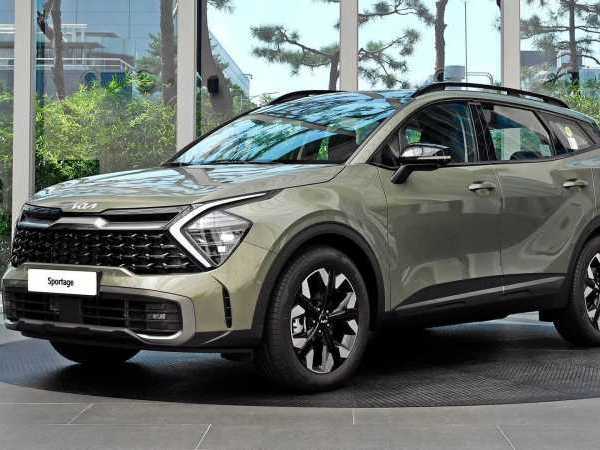
Kia Sportage: Superior Suspension for Smooth Ride
Kevin WongMay 19, 2025
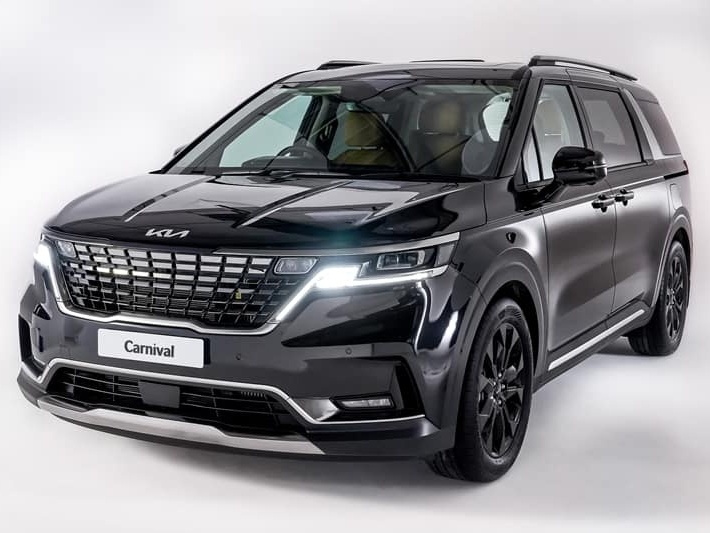
Kia Carnival: Spacious & Versatile for Every Journey
Kevin WongMay 19, 2025
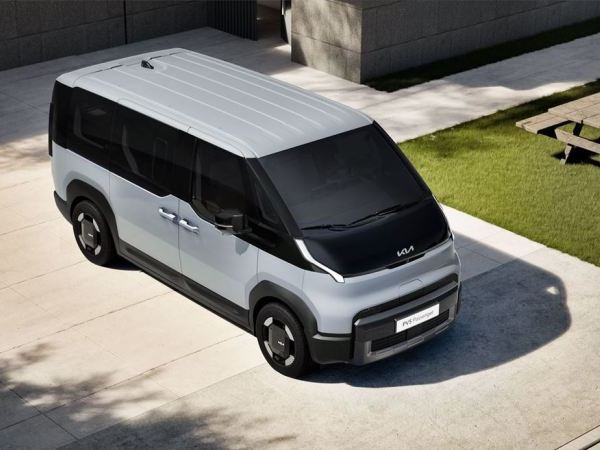
Kia reveals all details of PV5, with a maximum range of up to 400 kilometers
LienMar 11, 2025
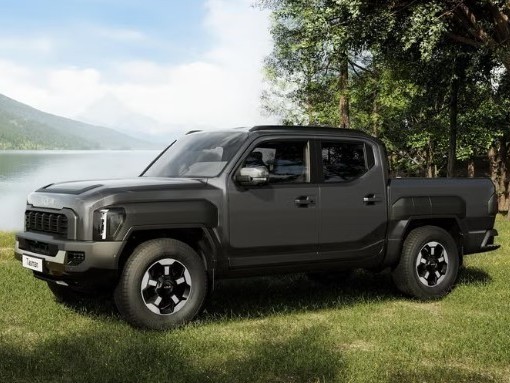
173L cargo box, 3500kg towing capacity, KIA Tasman meets all your needs!
MichaelOct 31, 2024

The interior of Kia's brand new pure electric sedan EV4 is exposed, expected to debut in mid-2025
MichaelOct 9, 2024
View More











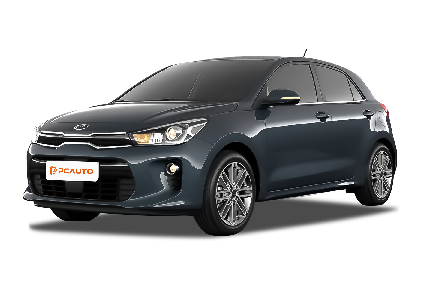
 Cars
Cars




Pros
Cons